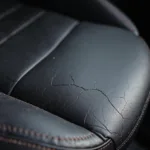“Cara repair Windows 10 dengan CMD” is a phrase you might encounter when your Windows 10 system starts showing signs of trouble. While it might sound intimidating, using Command Prompt (CMD) can actually be a powerful way to troubleshoot and repair common Windows issues. This guide will walk you through everything you need to know about using CMD for Windows 10 repair, from basic commands to more advanced solutions.
Before we dive into the specifics, it’s important to understand that CMD is a command-line interpreter, meaning it interacts with your computer through text-based commands instead of a graphical interface. This might seem a bit old-school, but it allows for greater control and flexibility when troubleshooting system errors.
Understanding the Power of CMD for Windows Repair
CMD grants access to a range of powerful tools and utilities that can help diagnose and fix a variety of Windows 10 issues. Here’s why using CMD for repair can be beneficial:
- Direct System Access: CMD commands interact directly with the Windows operating system, providing deeper access compared to using graphical tools.
- Versatility: CMD offers a wide array of commands that can address various problems, from file system errors to boot issues.
- Efficiency: Many CMD commands can be executed quickly and efficiently, potentially saving you time compared to navigating through multiple menus in the graphical interface.
Essential CMD Commands for Windows 10 Repair
Let’s explore some fundamental CMD commands that prove invaluable when repairing your Windows 10 system:
-
sfc /scannow: This command launches the System File Checker, a powerful tool that scans your system for corrupted or missing system files and attempts to repair them.
- To use it, simply open CMD as an administrator and type
sfc /scannow, then press Enter.
- To use it, simply open CMD as an administrator and type
-
chkdsk C: /f /r: This command runs the Check Disk utility, which examines your hard drive (C: in this case) for errors. The
/fparameter instructs it to fix any errors found, while/rtells it to locate and recover any bad sectors.- Replace “C:” with the drive letter of the drive you want to check if needed.
-
DISM /Online /Cleanup-Image /RestoreHealth: This command utilizes the Deployment Image Servicing and Management (DISM) tool, which can repair a wider range of system files than SFC. It’s particularly helpful if SFC alone couldn’t fix the problem.
-
bootrec /fixmbr & bootrec /fixboot: These commands are lifesavers when dealing with boot sector issues.
/fixmbrwrites a new Master Boot Record, while/fixbootwrites a new boot sector.
Troubleshooting Common Windows 10 Issues with CMD
Now that you’re familiar with some key commands, let’s see how to apply them to common Windows 10 problems:
1. Slow Performance and System Errors
If your system is sluggish or throwing errors, corrupted system files might be the culprit. Run the sfc /scannow command to scan and repair these files. If the problem persists, try the DISM /Online /Cleanup-Image /RestoreHealth command.
2. Boot Errors
Encountering a black screen with an error message during bootup? The bootrec /fixmbr and bootrec /fixboot commands can help repair your Master Boot Record and boot sector, respectively.
3. Hard Drive Errors
If you suspect hard drive errors, the chkdsk C: /f /r command will be your go-to tool. It’s a good practice to run this command periodically to maintain hard drive health.
4. Network Connectivity Issues
CMD offers several commands for diagnosing and fixing network problems. For example, ipconfig /flushdns flushes the DNS resolver cache, which can resolve DNS-related connection issues.
Advanced CMD Techniques for Experienced Users
For those comfortable with the command line, CMD provides even more advanced repair options.
Disclaimer: Proceed with caution when using advanced CMD commands. Incorrect usage can potentially lead to data loss or further system instability.
-
Resetting Windows 10: CMD allows you to reset your Windows 10 installation to its default settings. This can be helpful if your system is severely corrupted or unstable. However, be aware that this process will erase your data, so back up important files beforehand.
-
Managing Startup Programs: You can use the msconfig command to open the System Configuration utility. This allows you to manage startup programs, which can improve boot times and overall system performance.
-
Creating a System Restore Point: Before making significant system changes, it’s always wise to create a restore point. You can initiate the System Restore process from CMD using the rstrui.exe command.
Conclusion
“Cara repair Windows 10 dengan CMD” might sound daunting at first, but as you’ve learned, CMD is a valuable tool for troubleshooting and repairing your Windows 10 system. By understanding and utilizing the commands outlined in this guide, you can address many common Windows issues independently and keep your system running smoothly. Remember to exercise caution, especially when using advanced commands, and always back up your important data before making any significant system changes.
FAQs
1. Is it safe to use CMD for Windows 10 repair?
CMD is safe to use for Windows 10 repair, but it’s essential to use the correct commands and exercise caution, especially with advanced commands. Incorrect usage can potentially lead to data loss or system instability.
2. What should I do if a CMD command doesn’t work?
Double-check that you’ve typed the command correctly. Even a minor typo can prevent it from working. Ensure you’re running CMD as an administrator. If the problem persists, search online for the specific error message you encounter for potential solutions.
3. Can I use CMD to recover deleted files?
While CMD doesn’t have a built-in “undelete” feature, you can try using third-party data recovery software that utilizes the command line. However, success depends on factors like how long ago the files were deleted and whether the disk space has been overwritten.
4. Do I need to be a computer expert to use CMD for repair?
While some advanced CMD commands require technical knowledge, many basic repair commands are straightforward to use, even for beginners. This guide provides a starting point, and numerous online resources offer more in-depth information.
5. Are there any alternatives to using CMD for Windows 10 repair?
Yes, Windows 10 offers several graphical tools for troubleshooting and repair, such as the Settings app, Control Panel, and Windows Recovery Environment (WinRE). However, CMD often provides more direct access and control over system processes.
Need Further Assistance?
If you’re facing persistent Windows 10 issues or need personalized support, our team of certified technicians is here to help! Contact us via WhatsApp at +1(641)206-8880 or email us at [email protected]. We offer 24/7 customer support to get your system back on track.


